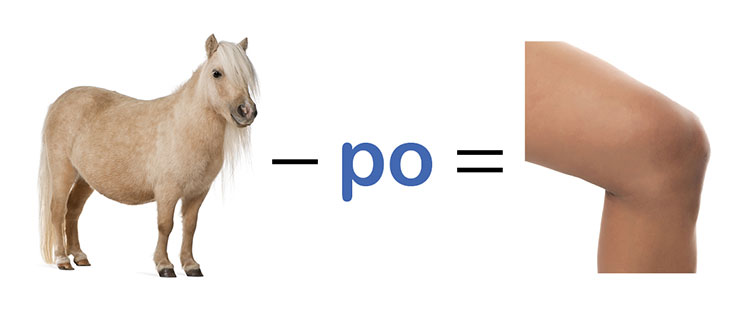E7: Two-Syllable Words, Part 4
1. Overview
Hear a two-syllable word and identify the last syllable, but without picture clues. Dividing a word into individual syllables is called analysis.
“Say pony, but don’t say po-…”
2. Materials
↑ Top3. Activity
Video: How to play Two-Syllable Words, Part 4
You will say a two-syllable compound word from the provided word list, and have the child repeat it. Then ask your child to tell you only the last part of the word you say. There are no picture clues in this game, so he will have to work harder to remember the word, divide it into parts. and say only the part you ask for.
Adult: I’m going to tell you a word. I want you to tell me only the last part of the word I say. Here’s the word: pony. Say pony. Child: Pony! Adult: Now say pony, but don’t say po-. Child: Um… Adult: Listen: pony. Po…ny. Po…ny. Say po…ny without po-. Child: Knee! Adult: That’s right.Go through the other words in the word list until your child stops paying attention. You can continue the activity at your next session. NOTE: Be careful not to add an extra “the” to your instructions, as in: “Say selfish without the sel-.” The extra word will just confuse your child. ↑ Top
4. Confidence Builder
If your child is struggling with this activity, go back and review Compound Words, Part 3. ↑ Top5. Extension
With this extended word list, you can challenge your child with some more words before moving on to the next activity or have a longer word list to use with a group of children. ↑ Top6. Small Groups (2-5 children)
Lesson Objective: Without visual aids, children will hear a two-syllable word, isolate and orally repeat only the last syllable of the word. GELDS (Georgia Early Learning & Development Standards): CLL6.4e Georgia Standards of Excellence: ELAGSEKRF2.b Common Core State Standards: CCSS.ELA-LITERACY.RF.K.2.B Additional Materials:- optional: toy phones (2)
Child A: I am calling Child B. Child B: Hello, Child A. Child A: Say acorn without a-. Child B: corn Child A: That’s right! Goodbye, Child B.Use this Reinforcement at Home form to tell parents and guardians how they can reinforce lessons outside the classroom. ↑ Top
Leave a Reply

